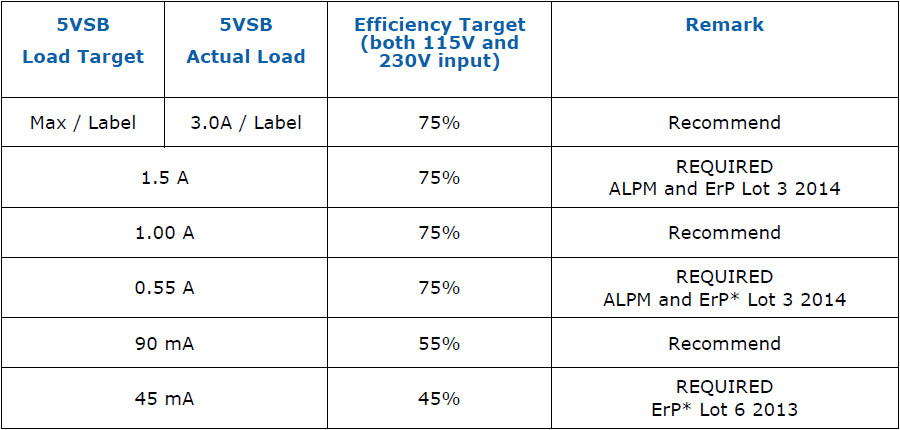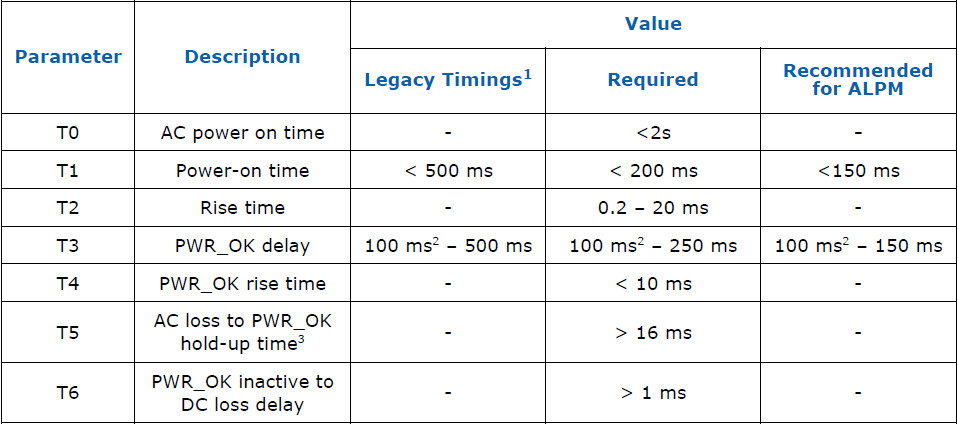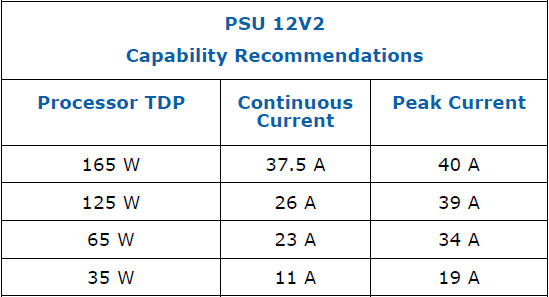Intel's ATX v3.0 PSU Standard Has More Power for GPUs
There is a new PSU standard from Intel, leading to huge changes in the IT market!
On February 1st, 2022, the ATX12V v3.0 spec became final, bringing considerable changes to power supplies. From now on, any PSU with more than 450W should include one of the new 12+4 pin connectors for Add-In Cards (like GPUs), and have various changes that allow it to deliver up to 200% of its max-rated capacity for short periods!
The new ATX spec also ensures that there won't be any shutdowns and other compatibility issues with the upcoming generations of power-hungry GPUs. From now on, the PSU will be able to set the power limit of the graphics card, meaning that you should invest in the proper PSU for your GPU or else you won't get to utilize it fully! There are also some changes in the design and efficiency requirements of the Alternative Low Power Modes (ALPM), allowing for lower power consumption.
The major changes that the ATX12V v3.0 brings are the following:
- New 12VHPWR connector for Add-In Cards (like GPUs) can deliver up to 600W
- The 12VHPWR should be labeled according to the maximum power delivered
- All PSUs with more than 450W max power have to have 12VHPWR connectors to meet the newest ATX spec.
- The PSU reports to the PCIe card, through sideband signals, its power capabilities, so the latter can set its power limit accordingly.
- PSUs should be able to turn on/off 175,200 times per year of their life without breaking!
- Changes in low load efficiency. Above 60% is required for 10W or 2% of max-rated capacity and above 70% is a recommendation.
- Increased tolerance for high power spikes, for the compatible PSU platforms. Up to 200% of the PSU's rated power for 100μs with a 10% duty cycle.
- Increased slew rates for transient loads (2.5 - 5x times higher for the +12V rail)
- 12V rail can go up to 12.2V to allow for lower voltage drops
- Broader load regulation limits for the +12V rail (+5 to -8% on the PCIe connectors and +5 to -7% for the other connectors).
- Changes in the speed of the Power On signal to allow for faster response and system's wake up, even when the rails are not at zero levels but somewhere in between.
- Efficiency and design requirements for Alternative Low Power Modes (ALPM), previously called Alternative Sleep Modes
- The labels on the PSUs should include T1 and T3 timings, among others.
- The addition of a new certification standard, Cybenetics, besides 80 Plus, is in the references section.
We will go through the list of changes explaining everything. We will try to keep things as plain as possible, but this won't be easy.
Labeling, 12VHPWR and Form Factor Revision Updates
Labeling and Marking - RECOMMENDED
The PSU labels should including the timing values (T1 and T3) and any 12VHPWR connectors should be labeled according to the maximum power that is supports according to the SENSE 0/1 pins. In case the sense lines are dynamic, the product's documentation must describe the power levels supported based on the number of installed PCIe (graphics) cards.
12VHPWR Cable Plug Connector
The new 12VHPWR connector is described in detail in the ATX12V v3.0
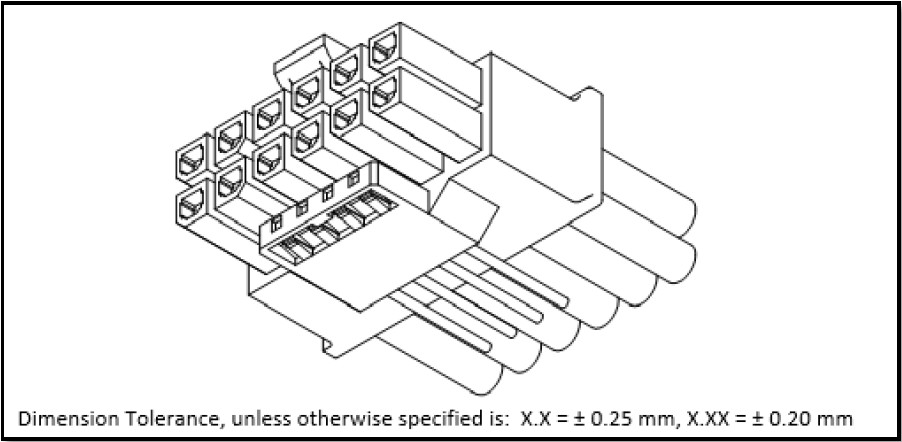
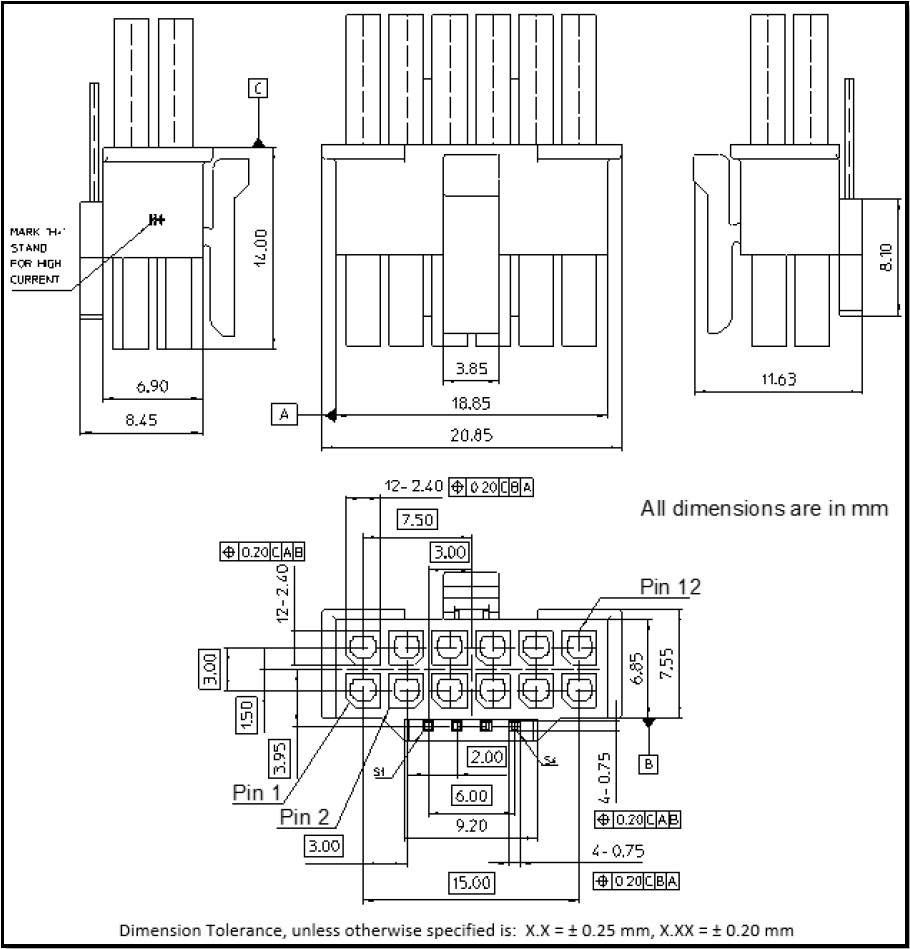
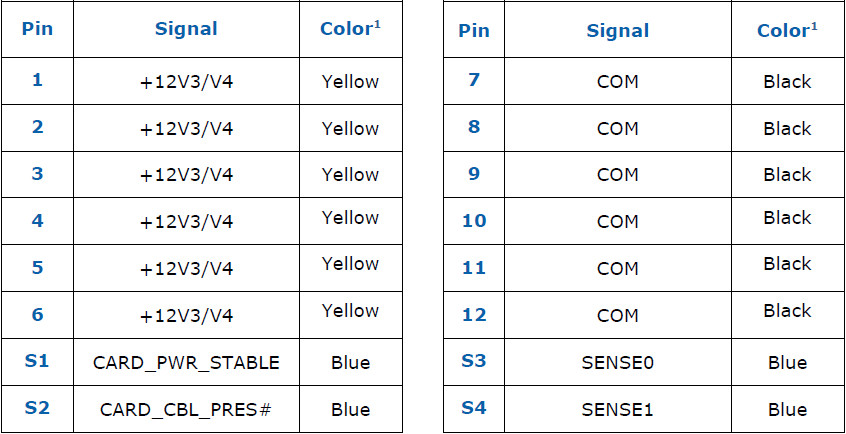
Each of the six power delivery pins should handle up to 9.2A with a limit of a 30 °C T-Rise above ambient temperature conditions at +12 VDC with all twelve contacts energized. This means 662.4W in total with 12V output.
Get Tom's Hardware's best news and in-depth reviews, straight to your inbox.
The 12VHPWR connector's pins, except the four sense pins, have to use 16AWG gauges instead of the 18AWG required for the other connectors. The sideband signal pins should use 28AWG gauges.
The 12VHPWR connector is optional for PSUs with 450W max power or less and is required for >450W PSUs.
New Mechanical Size Specification Revisions
ATX12V v3.0 includes revision changes to all form factors which are shown in the table below.
Updated text for clarity in Chapter 1: Introduction
In the first paragraph, the ATX spec mentions that since power supply needs vary depending on system configuration, the design specifics described are not intended to support all possible systems. In other words, the ATX12V v3.0 cannot support all possible systems (e.g., set the PSU requirements for multi-GPU systems). That said, the first paragraph emphasizes that the REQUIRED sections should be followed by all systems, while the RECOMMENDED section can be adjusted based on the system's design. There are some OPTIONAL sections, which are not for all designs.
Added Section 1.1 (Alternative Low Power Mode for Power Supplies) & Second reference for ALPM in Section 4.3.3
This new section is dedicated to the Alternative Low Power Mode (ALPM), which is supported by Windows 10 (Modern Standby) and Google's Chrome OS (Lucid Sleep). Since there new power states created some PSU requirements, the ATX spec has to specify them.
In the 5VSB rail's efficiency, the changes are the ALPM requirements at 0.55A and 1.5A load, shown in the table below.
A new column in the PSU timings table for the latest sleep modes shows the recommended PSU timings for ALPM support. As you can see, the hold-up time remains at 17ms and the power ok signal's hold-up time at 16ms.
In the reliability section (10.2), the ATX spec states that the power supply should be able to turn on/off 175,200 times per year of its lifetime without breaking, because in the S0 low-power idle mode, for systems with ALPM support, the PSU can turn off and on to save energy.
Finally, the last addition here is that for the PSU to support systems with ALPM, it may be asked to turn back on before all voltage rails have turned off. In other words, after the PS_ON signal is pulled to TTL high (asserted), turning off the PSU, the latter should be able to turn back on again within a very short period (100 ms minimum) once the PS_ON signal is pulled to TTL low (de-asserted).
Added new Reference Documentations
There is a reference in the ATX spec to the Efficiency (ETA) and Noise (LAMBDA) programs that Cybenetics LTD provides. This is the first time the Intel spec mentions another certification agency besides 80 PLUS.
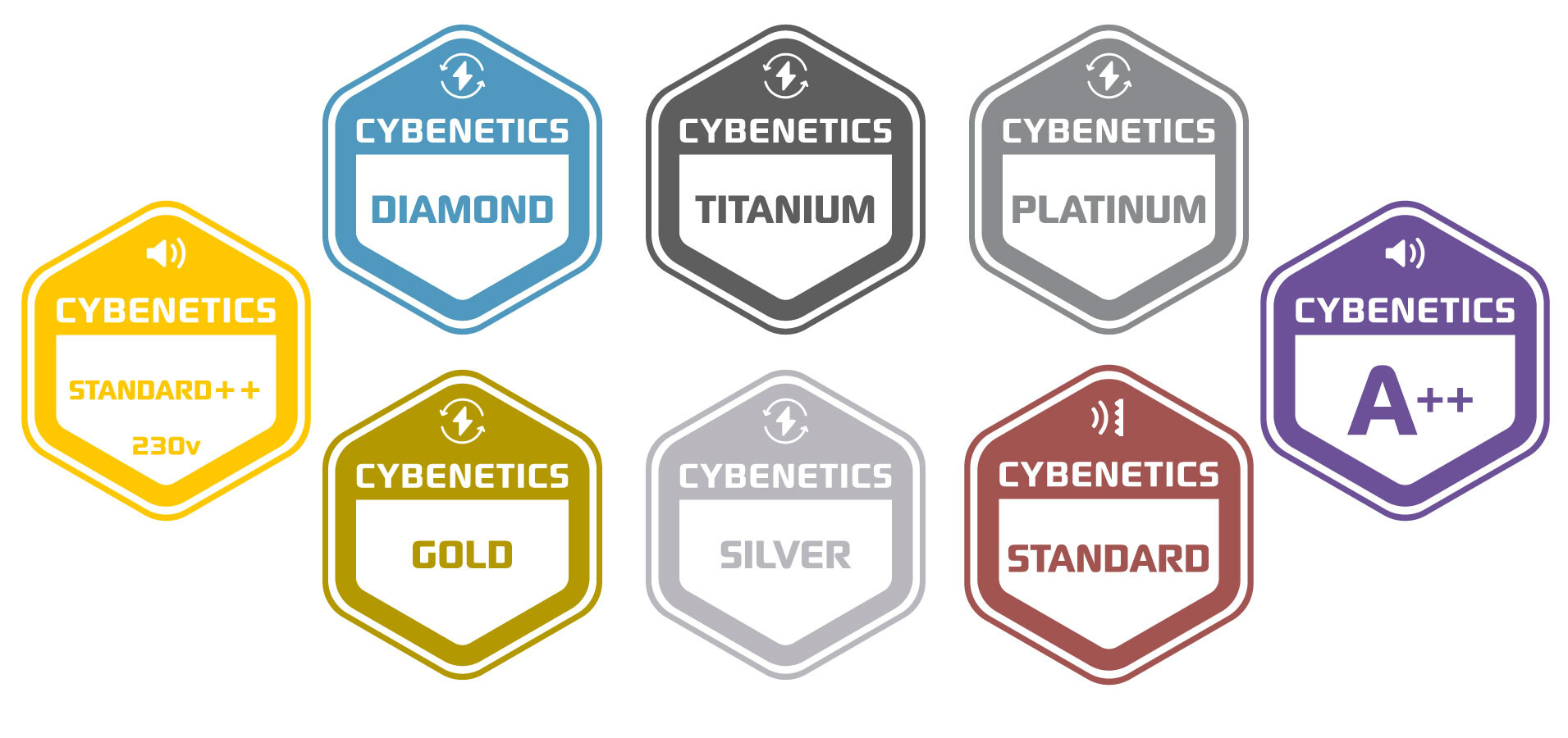

Updated Table 2-1 and reference text for Processors
The updated table, shown below, shows the continuous and peak current values for 12V2, according to the processor TDP.
Updated Section 2.2 (High End Desktop Market Processor Considerations) to provide clarity
The Intel spec mentions here that the EPS12V specification, mentioned in the specs of many high-end PSUs, is for the server market. The ATX spec will include higher power levels to support high performance desktop PCs, so there is no need to also mention the EPS12V in desktop PSUs.

Aris Mpitziopoulos is a contributing editor at Tom's Hardware, covering PSUs.
-
Elisis It seems the link to Page 6 of the article is bugged, as it just redirects you to the 1st.Reply -
2Be_or_Not2Be Were there any estimates on when we might see these new PSUs hit the market, and/or info on the GPUs that require them?Reply -
digitalgriffin Good article. But the IC's to catch the power spikes and duty cycle time will require a lot of re-engineering. I expect a significant premium on these new models.Reply -
jeremyj_83 Reply
My guess is that the PSU manufacturers have had the final specs for a good 6 months now to be able to make their new products. Same with AMD/nVidia for their GPUs. I suspect that we will see these PSUs come out with the next GPU and CPU releases with PCIe 5.0 support.2Be_or_Not2Be said:Were there any estimates on when we might see these new PSUs hit the market, and/or info on the GPUs that require them?
I do like that the new spec includes the CPU continuous power for HEDT CPUs. Makes the decision on a PSU much easier for people who need those CPUs. Also helps Intel as their CPUs are quite power hungry during boosting. -
digitalgriffin Replyjeremyj_83 said:My guess is that the PSU manufacturers have had the final specs for a good 6 months now to be able to make their new products. Same with AMD/nVidia for their GPUs. I suspect that we will see these PSUs come out with the next GPU and CPU releases with PCIe 5.0 support.
I do like that the new spec includes the CPU continuous power for HEDT CPUs. Makes the decision on a PSU much easier for people who need those CPUs. Also helps Intel as their CPUs are quite power hungry during boosting.
The over power safety IC logic is a lot more complicated and has to be a lot more accurate. 200% power for 100us 10% duty is a nebulous one as I don't think there's anything that fast out there. But also what happens when you start getting mixed spikes like 150% mixed with 200% and 110%?
Power = V*V/R. So you cut the resistance in half and your amps shoot through the roof. The cables in the spec will heat up QUICKLY. As the power grows, the amount of power lost to heat exponentially grows. So you are dealing with an exponential heat problem with mixed amperages and duty cycles. It will require a total waste heat power table that tracks over time. -
2Be_or_Not2Be Replydigitalgriffin said:The over power safety IC logic is a lot more complicated and has to be a lot more accurate. 200% power for 100us 10% duty is a nebulous one as I don't think there's anything that fast out there. But also what happens when you start getting mixed spikes like 150% mixed with 200% and 110%?
Power = V*V/R. So you cut the resistance in half and your amps shoot through the roof. The cables in the spec will heat up QUICKLY. As the power grows, the amount of power lost to heat exponentially grows. So you are dealing with an exponential heat problem with mixed amperages and duty cycles. It will require a total waste heat power table that tracks over time.
Yeah, maybe since I don't see any announced in conjunction with the spec finalization, it's probably a bigger task for the PSU OEMs along with little need for it now. That, combined with parts shortages, probably means we won't see these new PSUs until late 2022 or even 2023. -
Co BIY The binary specification of the "Sense" pins seems over-simplified to me. Allowing these to carry a "bit" more data would make make more "sense".Reply -
wavewrangler Peace! Thanks for readin'.Reply
I wish we could get a proper write up on this like igorslab did (igorslab insight into atx 3.0) I am really... doubly so, shocked...that this is being championed, like more electricity for seemingly no real good reason is a good thing (along with 600watt cards), not to mention increased costs, increased complexity, complete redesigns, more faulty DOA components, list goes on. Those tables Intel put out are far out.
At the very least, I would have liked to have seen some questioning as to why this is a necessity and what some of the ramifications are going to be at the consumer level. Some of these things I have no idea how manufacturers will implement, and how they do it is the only thing I look forward to seeing. I mean, 200%. Why would I need 200% power for any amount of time, regardless of boost?? How do the components handle that? That's cutting amps in half. I feel like this is pretty much just starting over, not building upon.
Moore's Law has now become a doubling of power every 2 years. We'll call it More's Law. This is kind of what happens after you break physics, it collapses in on itself and goes inverse... Intel will soon get into the nuclear energy business to complement their CPUs needs. There are some things I like, but...what I would have liked more is some transparency and communication as to why the world needs this. Nvidia, Intel, AMD, et. al., always could have created 600-watt CPUs/GPUs. Actually, Pentium comes to mind... The real story here, I'm guessing, is that microarchitecture design and innovation has plateaued, and they all know more power will soon be needed to achieve any meaningful performance gain. Meanwhile, look at what DLSS and co. and a little (a lot) of hardware-software complimented innovation did for performance. Christopher Walken would approve, at least. Moar. Moar Pow-uh!
Never thought I'd need more than 1KW, what with the whole "efficiency" thing. Why not just make SLI, CrossFire, SMP work better at this point?! This is wardsback. Hello, a few thoughts on this. Mostly personal rambles.
-
digitalgriffin Replywavewrangler said:Peace! Thanks for readin'.
I wish we could get a proper write up on this like igorslab did (igorslab insight into atx 3.0) I am really... doubly so, shocked...that this is being championed, like more electricity for seemingly no real good reason is a good thing (along with 600watt cards), not to mention increased costs, increased complexity, complete redesigns, more faulty DOA components, list goes on. Those tables Intel put out are far out.
At the very least, I would have liked to have seen some questioning as to why this is a necessity and what some of the ramifications are going to be at the consumer level. Some of these things I have no idea how manufacturers will implement, and how they do it is the only thing I look forward to seeing. I mean, 200%. Why would I need 200% power for any amount of time, regardless of boost?? How do the components handle that? That's cutting amps in half. I feel like this is pretty much just starting over, not building upon.
Moore's Law has now become a doubling of power every 2 years. We'll call it More's Law. This is kind of what happens after you break physics, it collapses in on itself and goes inverse... Intel will soon get into the nuclear energy business to complement their CPUs needs. There are some things I like, but...what I would have liked more is some transparency and communication as to why the world needs this. Nvidia, Intel, AMD, et. al., always could have created 600-watt CPUs/GPUs. Actually, Pentium comes to mind... The real story here, I'm guessing, is that microarchitecture design and innovation has plateaued, and they all know more power will soon be needed to achieve any meaningful performance gain. Meanwhile, look at what DLSS and co. and a little (a lot) of hardware-software complimented innovation did for performance. Christopher Walken would approve, at least. Moar. Moar Pow-uh!
Never thought I'd need more than 1KW, what with the whole "efficiency" thing. Why not just make SLI, CrossFire, SMP work better at this point?! This is wardsback. Hello, a few thoughts on this. Mostly personal rambles.
Power gating is a technique that powers down part of the gpu to save power. This allows it to run cooler. But reinitiating those stages of circuits often creates a massive power inrush. A GPU hardware scheduler can see certain circuits are needed and flip the switch to power up those sections well before the instruction is dispatched. But a high inrush current is needed to make sure said circuit is initialized in time.
Second some mimd matrix operations / tensor ops are massive power hogs.
These two things together result in current influx. When you have a massive use inrush of energy, resistance drops to zero. V = IR. That means voltage drops the zero and why you have all these capacitors which store up energy to reduce voltage swings. Voltage swings are what create instability, and in rare cases, damage.
Now these huge currents are nothing new. They have been around for a decade. However, the sudden burst though and sensitivity to them is new.
As circuits get smaller, the transistor threshold for operating voltage is smaller. Also the number of transistors firing goes exponentially up. Thus lower more sensitive voltage but more current.


